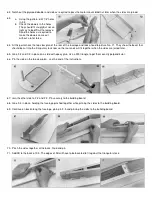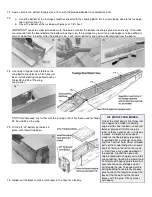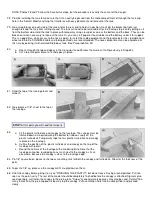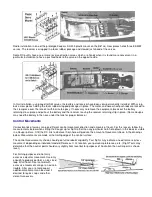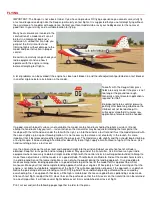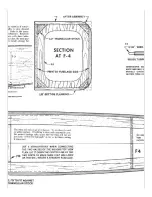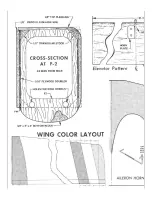
.
FLYING
IMPORTANT: The Kougar is not a basic trainer. If you have no previous RC flying experience you cannot successfully fly
a fast and responsive design like the Kougar, particularly on test flights. It is suggested that you not attempt flying without
the assistance of a modeler with experience. Contact your local model club or ask your hobby dealer for the names of
good fliers in your vicinity and a suitable location for flying.
Many hours of work are involved in the
construction of a model and it can all
be lost in a moment of beginner's
indecision. A skilled flier can help you
get past the first critical test and
trimming flights without damage to the
model and give instruction in proper
control.
Be certain to carefully range check your
radio equipment and see how it
operates with the engine running
before attempting test flights.
A lot of problems can be avoided if the engine has been well broken-in and the idle adjustment perfected on a test block or
in another airplane before installation in the model.
Takeoffs with the Kougar from grass
fields are easily made if the grass is not
too long or the ground too rough.
Generally a lot of elevator application is
required for liftoff.
Be prepared to relax control pressure
partially after becoming airborne so the
climbout will not be too steep. On
surfaced or smooth dirt runways less
application of elevator will be needed.
If a good, smooth take-off surface is not available, the model can be hand launched by the pilot's assistant. (Do not
attempt to hand launch by yourself --- instant action on the transmitter may be required.) Holding the front part of the
fuselage with the left hand and under the tail with the right, run into the wind at a fast trot and thrust the model forward with
the nose slightly up in a spear throwing motion. It is not necessary to achieve a lot of velocity in the launch-it is more
important that it be released smoothly and with the wings level. The model may dip slightly and then should begin climbing
at a slight angle. If it does not begin to climb after about fifty feet of flight, apply a small amount of up to lift the nose. Use
hand launching only as a last resort.
Use the ailerons to keep the wings level and headed straight into the wind until about seventy-five feet of altitude is
obtained. Keep first turns gentle and not steeply banked. Stay up wind of the transmitter. Use trim levers on your radio
equipment where necessary to obtain straight and level flight with the control sticks in neutral position but don't attempt to
make these adjustments until the model is at a good altitude. Throttle back at altitude to find out the model characteristics
in a gliding condition so that some indication is seen of what to expect during the landing approach. It is a good idea to
make several practice landing approaches at a good altitude to get the feel of the model for this approaching critical
maneuver. Make your final and complete landing approach while your engine still has plenty of fuel remaining so that the
engine is not liable to stop before completion of the flight. This will allow application of power if the approach is undershot.
Notice the percentage of missed landings at an R/C flying field. Those undershot greatly outnumber those missed by
overshooting. So, if an approach that looks a little high is maintained, chances are good that a spotlanding can be made.
After each test flight, readjust the RC clevis links on the pushrods so that the trim levers on the transmitter can be returned
to a neutral position. It will take several flights before exact trim is established on all axis of flight.
Print, cut out and join the following pages together in order for the plans.


